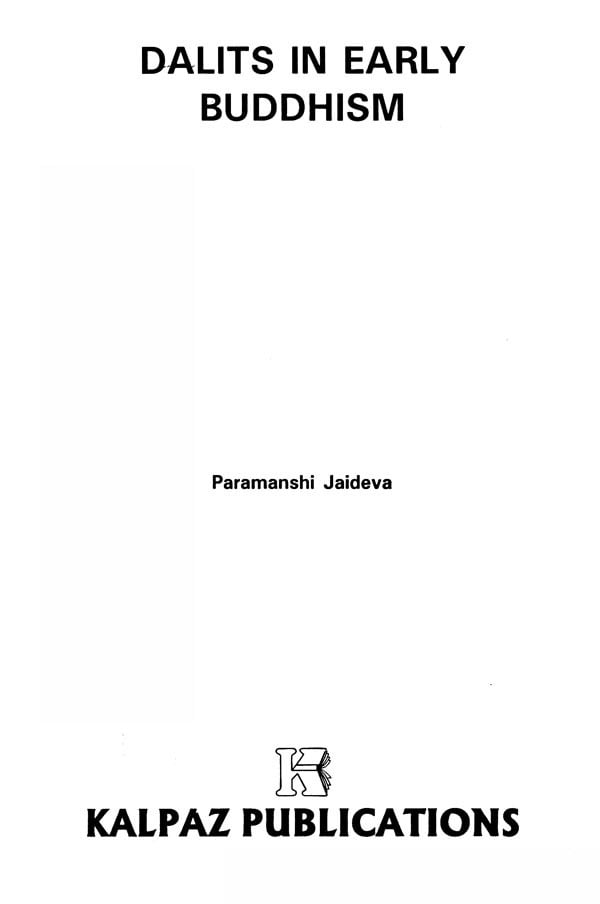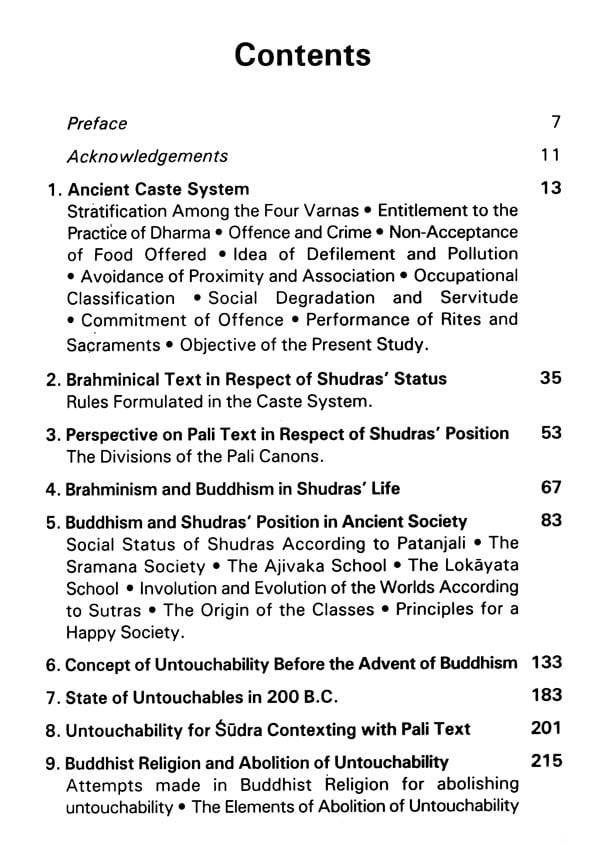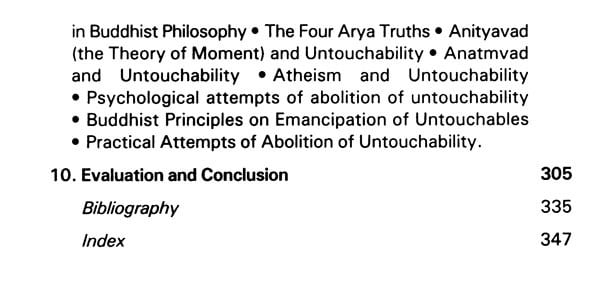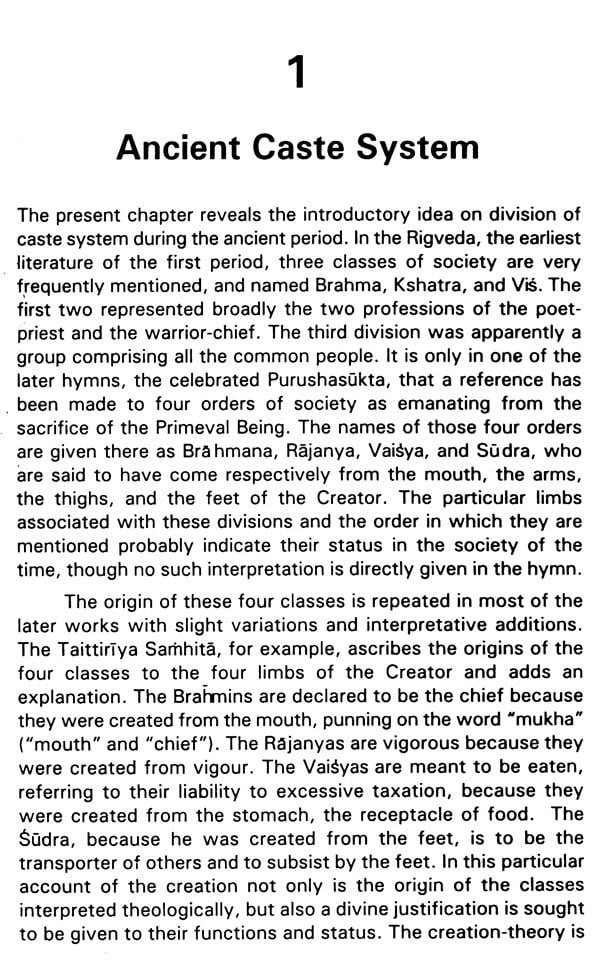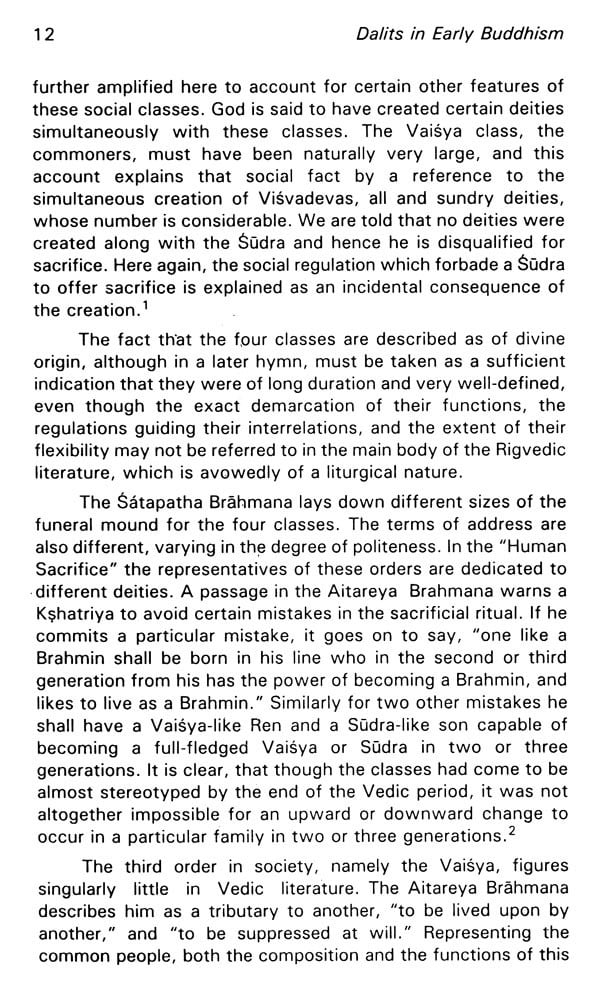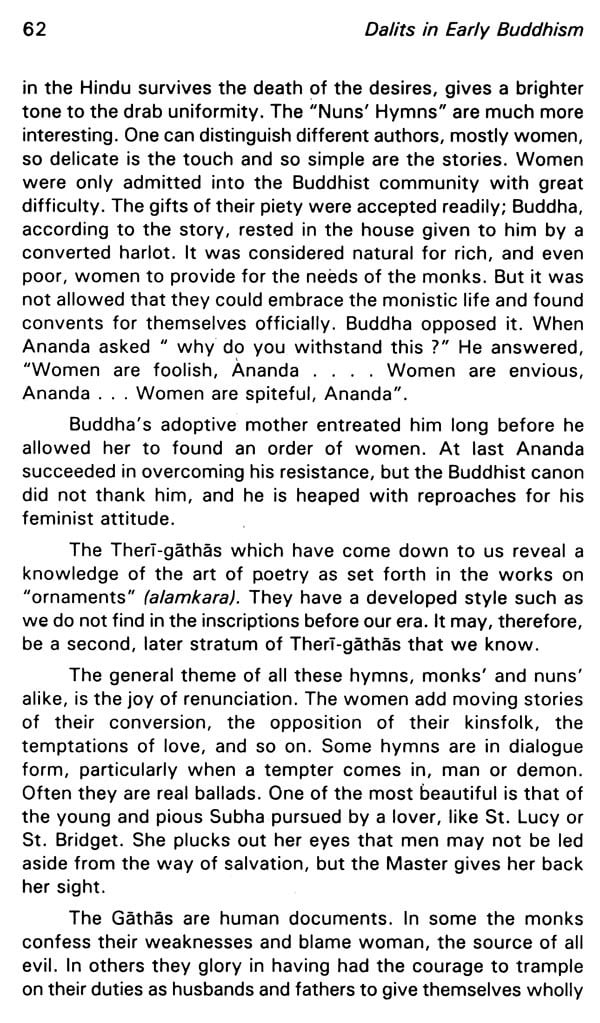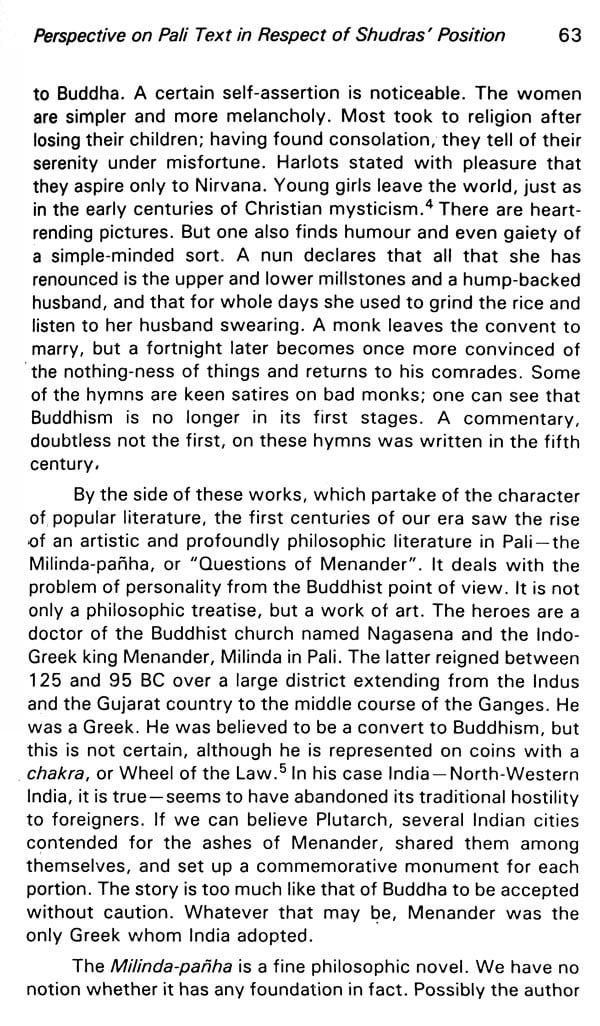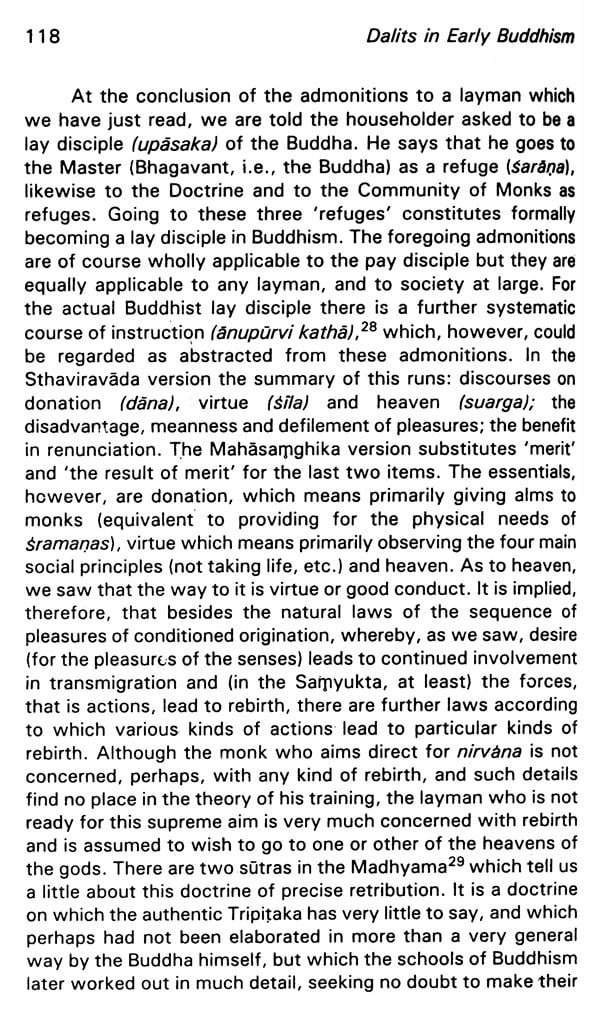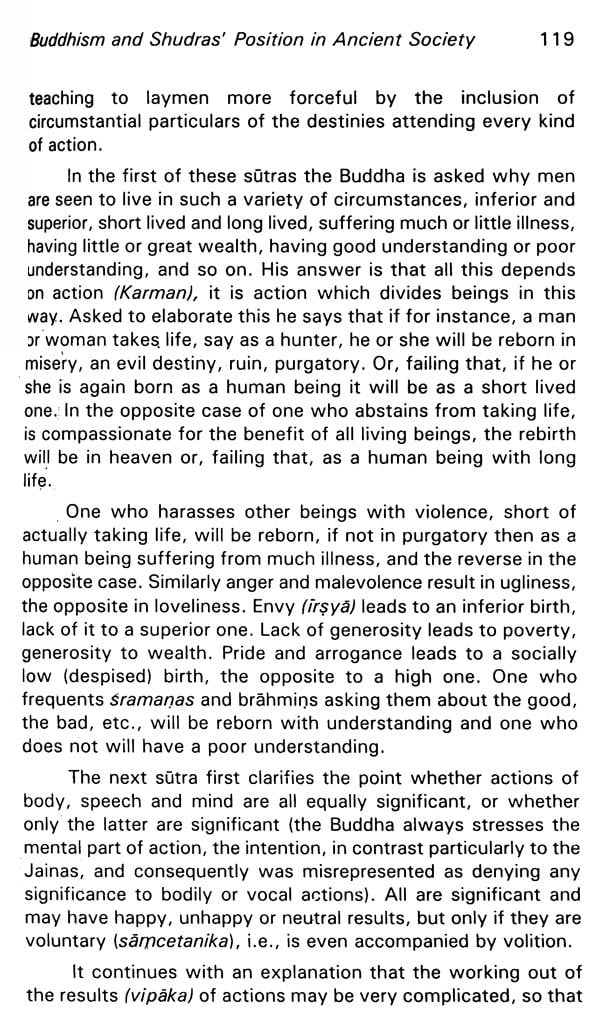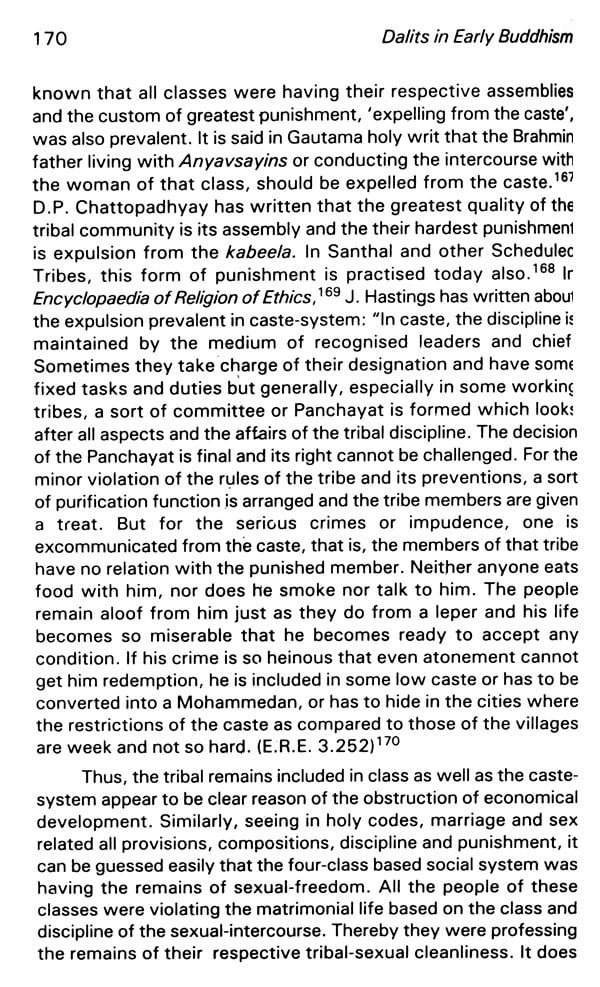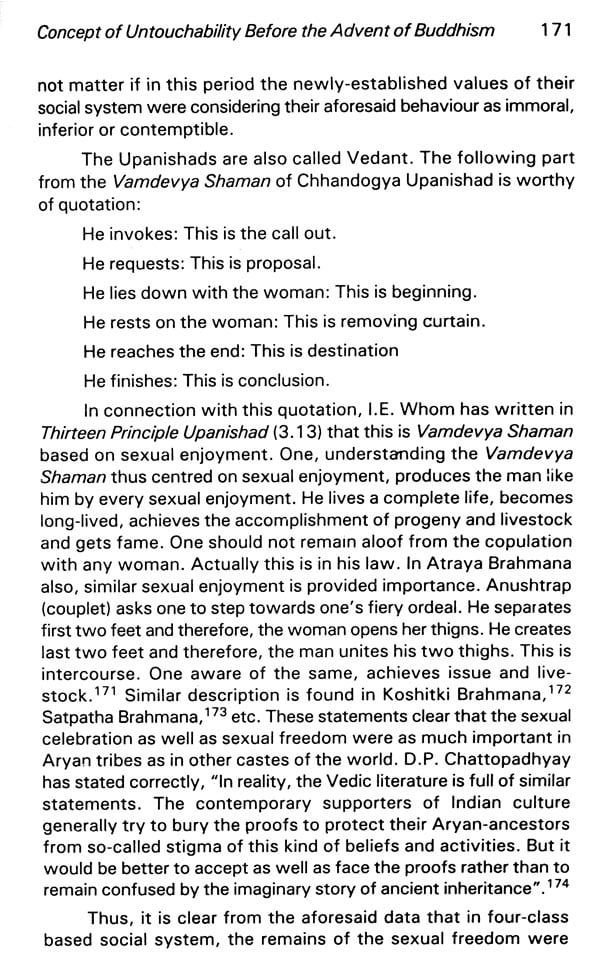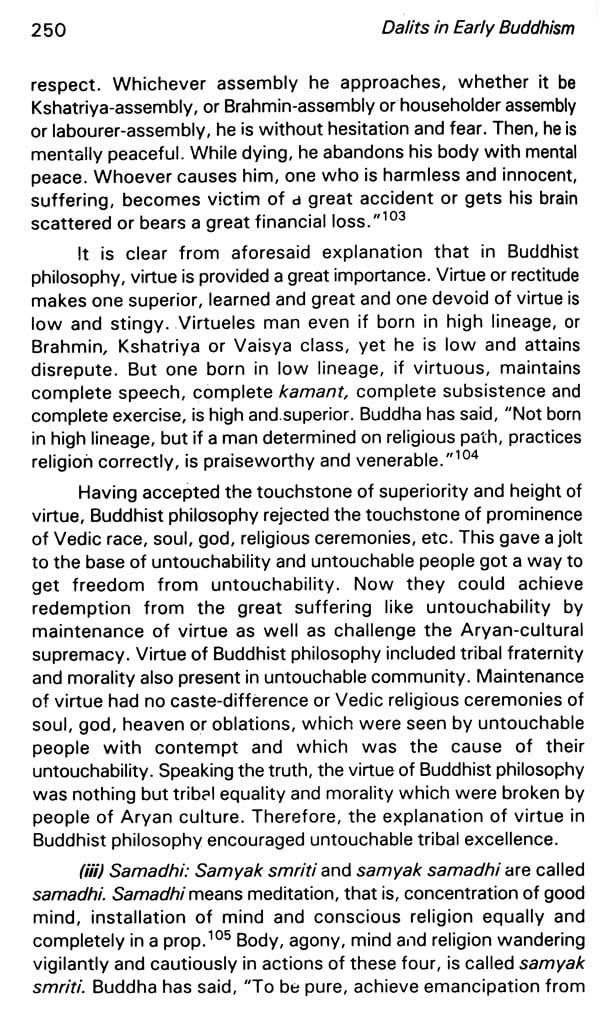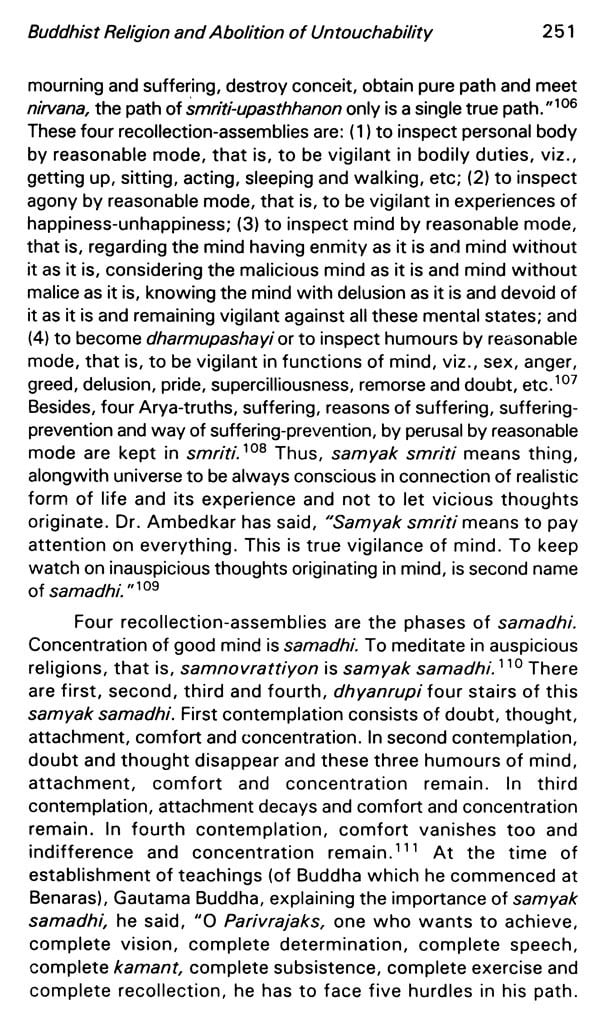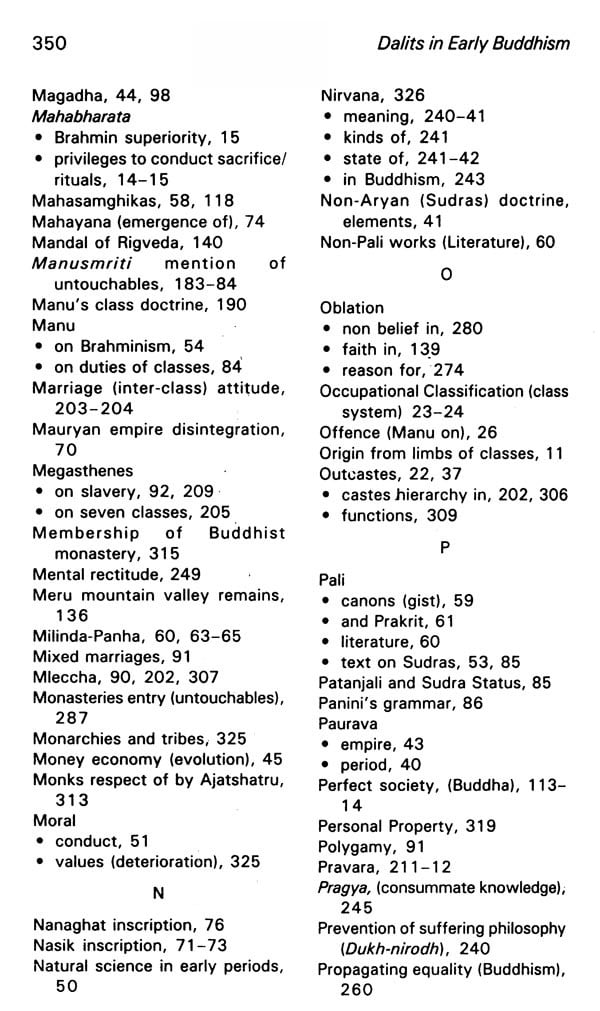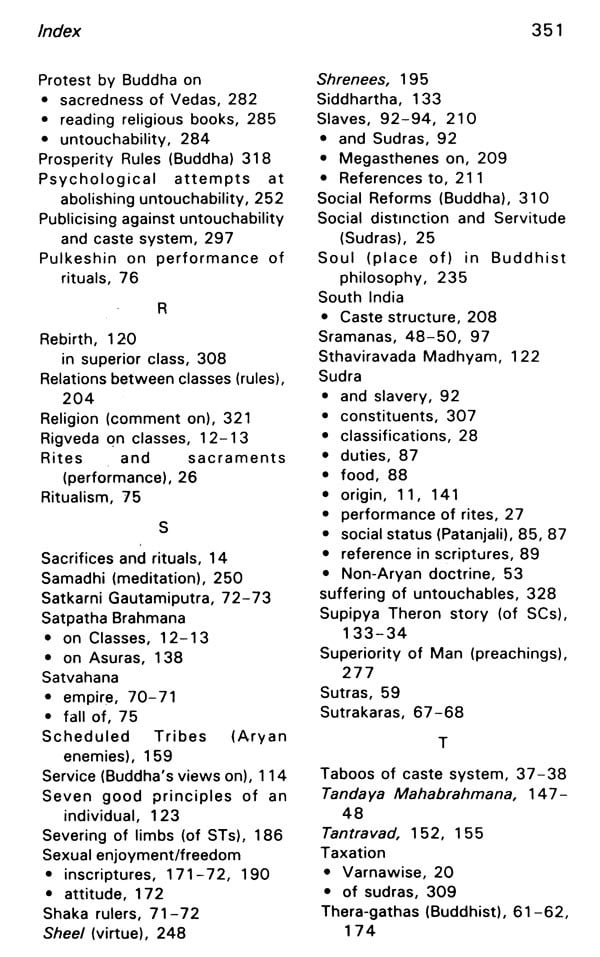
Dalits in Early Buddhism
Book Specification
| Item Code: | AZG856 |
| Author: | Paramanshi Jaideva |
| Publisher: | KALPAZ PUBLICATIONS |
| Language: | ENGLISH |
| Edition: | 2002 |
| ISBN: | 8178351226 |
| Pages: | 352 |
| Cover: | HARDCOVER |
| Other Details | 9.00x6.00 inch |
| Weight | 570 gm |
Book Description
It is a useful book for social scientists and students interested in various phases of Dalits and early Buddhism.
The theme has been weaved into ten comprehensive chapters, along with a bibliography have deep bearing on ancient caste system, socio-economic position of Sudras in the society, the effectiveness of Brahmanism and Buddhism in the life of Sudras, the general concept of untouchability before the advent of Buddhism, untouchable as mentioned and elaborated in the Pali text and the plan, programme, efforts and the success achieved by Buddhist religion in connection with the abolition of untouchability. The last Chapter on evaluation and conclusion deal with the liberalising influence of the Buddhist revolt and of Vaishnava compassion leading the Brahmins to devise ways and means of assuring spiritual betterment to the Sudra in the Brahminic ways of rites and sacraments. It is evident that the performance of the Brahminic rites and sacraments by a large section of the people had a selfish interest for the Brahmin, which he could not have entirely lost sight off. In fact the religious rites and sacraments required the services of a Brahmin. If the Sudras wanted to perform the Brahmanic rites and sacraments. They would invariably have to requisition the services of a Brahmin.
The present study analyses the general beliefs of the Buddha who unquestionably was a great social reformer for all human beings and that his efforts for the emancipation of women and lower castes created a sort of social revolution in Indian society.
**Contents and Sample Pages**
